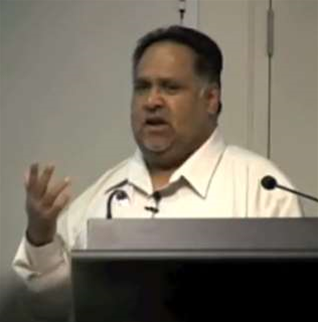Bureau of Meterology chief information officer Robert Lovery has departed the organisation after more than four years in the job.

Lovery was named the BoM’s CIO in August 2009 to lead 14 programs under the department’s IT efficiency and cost cutting initiatives.
He joined the department from his prior role at the Victorian Environmental Protection Agency, where he had been working as its business systems and application manager.
Lovery’s position as assistant director of information technologies and CIO reports into the deputy director of research and systems, who in turn reports to BoM director of meteorology Rob Vertessy.
The BoM declined to detail Lovery’s next moves.
"Rob has brought considerable experience, and a fresh and direct approach to addressing the many ICT challenges faced by the Bureau – which will be greatly missed," a Bureau spokesperson said in a statement.
The department is now advertising externally for the position, which has a paygrade of between $232,182 - $259,114, according to the job ad. Assistant Director of observations and engineering Sue Barell is currently acting in the CIO role.
The job, based in either Canberra or Melbourne, will lead the department’s information systems and services division, which looks after the adoption of new technologies, centralising and developing applications and systems, and services, communications and computing for the BoM.
Lovery’s successor will look after the replacement of its high-performance computational (HPC) system this year, a project that is expected to improve the BoM’s weather modelling capabilities.
The BoM currently uses an Oracle/Sun-based HPC system which has 576 compute nodes rated at around 49 Teraflops, and wants to upgrade to a system with specs that best the Australian Government’s Fujitsu-based ‘Raijin’ supercomputer.
Raijin has 57,472 Intel 2.6Ghz Xeon Sandy Bridge cores in 3596 compute nodes, around 160TB main memory and a peak performance of 1.2 petaflops. It cost $50 million to build and costs $12 million a year to run.
The BoM is also working on a replacement of its online water storage database after realising it needed external help to maintain the complex open source platform.
The BoM will base the new database on an off-the-shelf software product. It had spent almost $40 million building the now defunct Java-based website, first launched in 2010 with the help of SMS Management and Technology.
The replacement Australian Water Resources Information System (AWRIS) system was expected to go live at the end of this year.



.png&h=140&w=231&c=1&s=0)






.png&w=120&c=1&s=0) EDUtech AU
EDUtech AU
.png&w=120&c=1&s=0) Security Exhibition & Conference 2025
Security Exhibition & Conference 2025
 Integrate Expo 2025
Integrate Expo 2025
 Digital As Usual Cybersecurity Roadshow: Brisbane edition
Digital As Usual Cybersecurity Roadshow: Brisbane edition
 iTnews Benchmark Security Awards 2025
iTnews Benchmark Security Awards 2025











.jpg&h=140&w=231&c=1&s=0)



